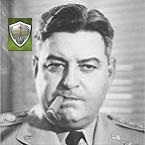ColinWright
Posts: 2604
Joined: 10/13/2005
Status: offline

|
quote:
ORIGINAL: Meyer1
Just readed the whole thing (well kinda)... and a couple of points:
1) Curtiss - AA fire (regardless of enemy aircraft shotdown) vs precision of the bombing, there was definitely a connection! It wouldn't be if the pilots were robots
2) Collin - I don't know where you got the idea that the AOK 6 in Stalingrad only had/received supply for the infantry units. You are not gonna hang in there for months without tanks, and specially, artillery.
The point really is that the infantry was able to operate at much closer to its full potential even under conditions of straitened supply, and that in any case, infantry requires far less in the way of sheer tonnage. Food and ammo for a day of heavy fighting for an infantry battalion might come to ten tons -- and they could have considerable combat value even if that number was divided by four. The requirements for food, ammo, and fuel for a day of heavy fighting for a tank battalion would be more on the order of a hundred tons -- and there'll be a more or less straight line decline in efficacy if that value is reduced. You can make a hungry man march -- and he can pose a meaningful threat with even a pound of cartridges. A tank without fuel simply can't move, and each one of its shells weighs thirty pounds or so. Artillery is going to be even more extreme.quote:
Also, ref the reliabilty of tanks: thing is, is very difficult (or impossible?) to find objective data regarding the respective level of serviceable tanks, in different armies, to compare. And even if you do, that not only would reflect how "reliable" a tank is, but many other things. And, the Tigers were not concentrated in separate battalions because of this, but since they were supposed to be used in the focal center of an attact, they were at dispossal of the Corps/Army level. And, I may add, at first some units were integrated in the divisions with other Panzers (see SS units at Kursk), or even mixed with other tanks in the Battalions (Pz III)
Finally quote:
I'm reminded of Guderian's observation that when his division commanders would claim to be out of fuel, he could safely assume that actually they still had enough for another day and would issue orders accordingly.
I believe that was in Mellenthin's book, and I think he was quoting Balck..
Nothing personal, just bussiness 
Regards, Hernán.
The Tigers you could quite well be right about -- although they do seem to have broken down a lot. As to the quote, though, it's definitely in Panzer Leader. That's sitting right on my bookshelf.
Anyway, sure varying reliability is difficult to determine, subjective, dependent on factors external to the actual design, etc. Nevertheless, it was also very much a reality. The ideal would be a rating that could be modified in the Bioeditor. The stock rating could simply be some undifferentiated value -- or if someone wants to impose their opinion, I don't care. The point is that then designers could adjust it to suit the historical behavior of the Super Wombat III or whatever in the campaign they're trying to model. As it is, early British cruisers can charge from Tobruk to El Agheila with no greater losses than Stuarts would suffer.
< Message edited by ColinWright -- 2/9/2010 9:37:41 PM >
_____________________________
I am not Charlie Hebdo
|
 Printable Version
Printable Version










 New Messages
New Messages No New Messages
No New Messages Hot Topic w/ New Messages
Hot Topic w/ New Messages Hot Topic w/o New Messages
Hot Topic w/o New Messages Locked w/ New Messages
Locked w/ New Messages Locked w/o New Messages
Locked w/o New Messages Post New Thread
Post New Thread